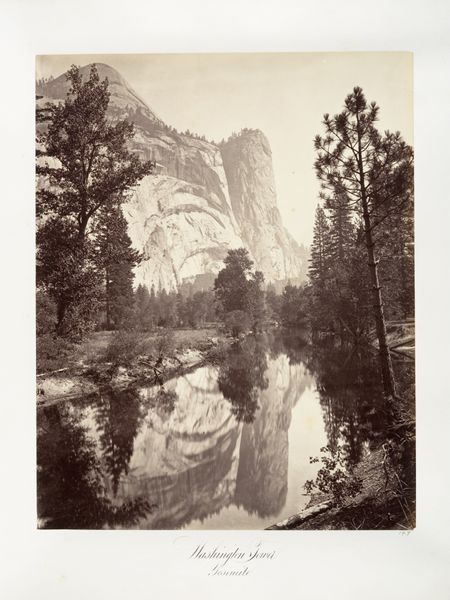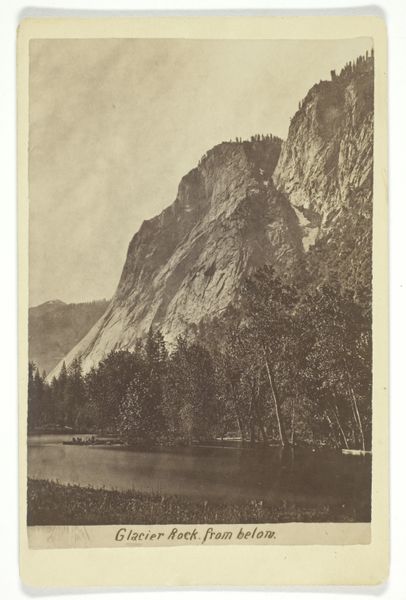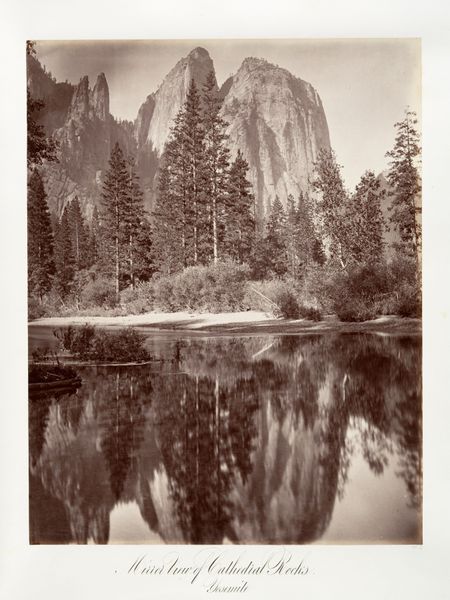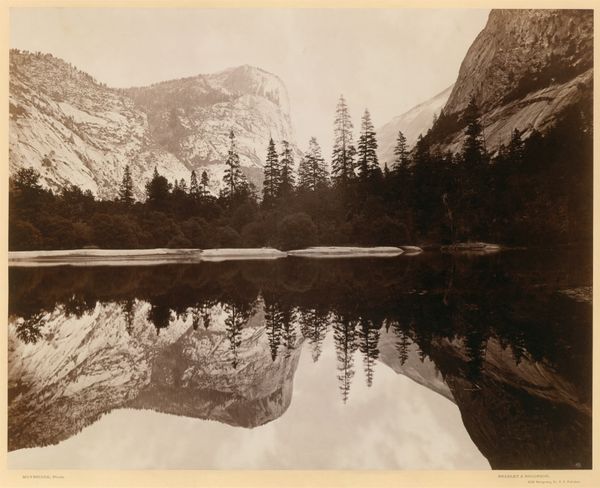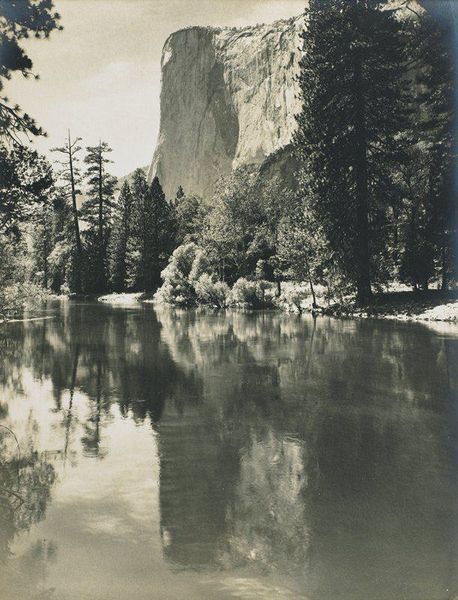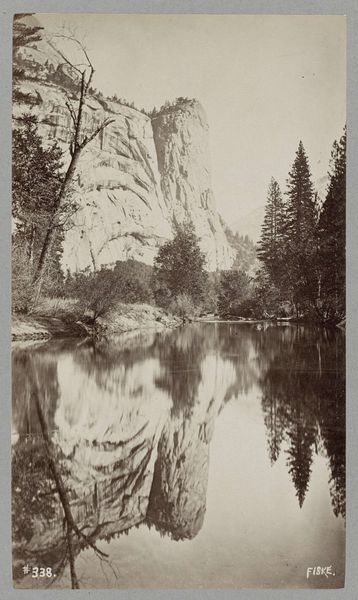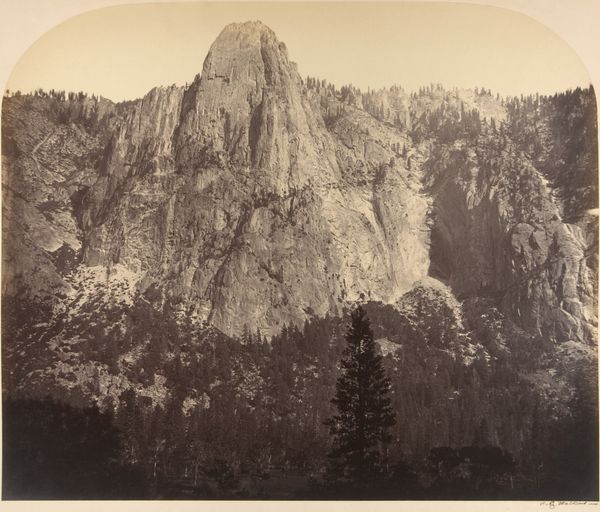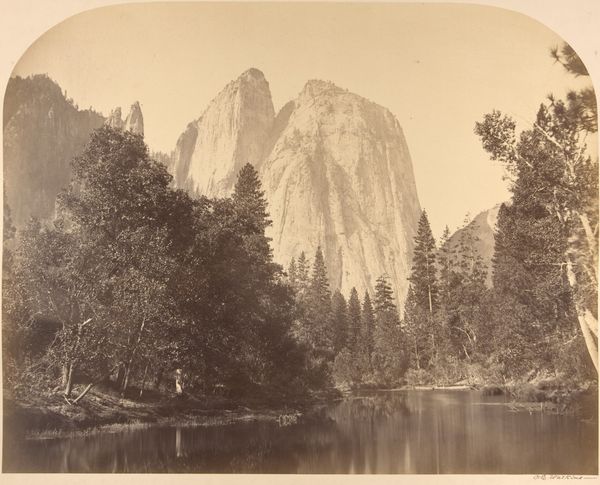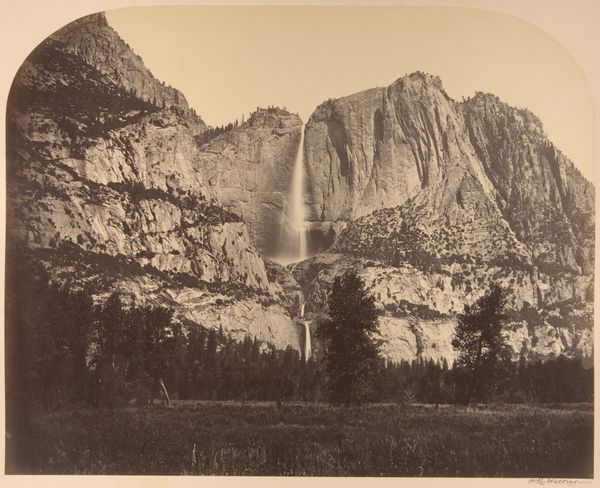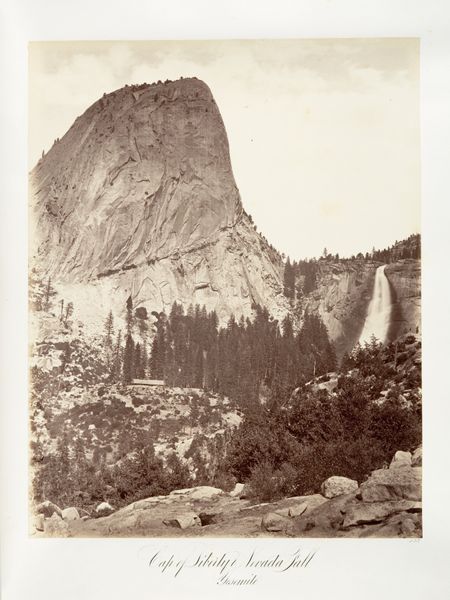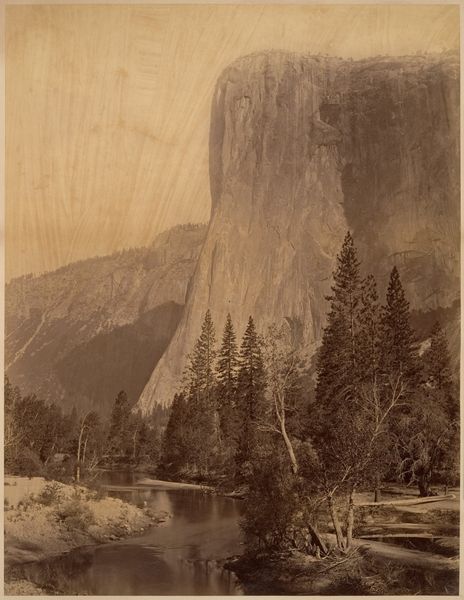
plein-air, photography, gelatin-silver-print
#
still-life-photography
#
plein-air
#
landscape
#
photography
#
mountain
#
gelatin-silver-print
#
hudson-river-school
Copyright: Public Domain
Curator: Immediately, there's this remarkable tranquility in Watkins's "Washington Tower, Yosemite," captured between 1870 and 1874. The water is so still it almost perfectly mirrors the monumental rock formation. Editor: It’s undeniably beautiful. But I think it’s essential to look beyond just the aesthetics. This image comes from a time of immense cultural shifts, especially concerning our relationship with land and indigenous populations. Curator: Precisely. Watkins' photographs, while undeniably stunning landscapes, were also instrumental in shaping perceptions of the American West. They helped create this narrative of pristine wilderness that, of course, often erased the history and presence of Native American tribes who were the original stewards of that land. Editor: Right, that idyllic view, while awe-inspiring, facilitated westward expansion and resource extraction policies that directly impacted indigenous communities. How do we grapple with this inherent tension – appreciating the artistic skill while critically examining its historical implications? Curator: Well, Watkins himself was operating within a specific social and economic context. He wasn't just making art, he was making a living in a growing art market that catered to ideas about manifest destiny. His work, sold through galleries and print shops, circulated certain cultural values tied to that movement. Editor: And looking at his chosen medium of photography at that time is critical. Watkins and other photographers shaped the narrative of the West in profound ways; his work almost functioned as visual propaganda that played into the mythology of the "untouched" landscape waiting to be settled. Curator: I completely agree. We should look at these photographs as documents with power to influence both individual perception and governmental policy. We need to examine the choices he made in terms of composition and framing and explore how those choices reinforced particular views about the land, ownership, and civilization itself. Editor: It’s a layered examination. We need to move beyond simple appreciation towards recognizing the complexities, contradictions, and sociopolitical realities embedded in these supposedly timeless scenes. I can never look at another Ansel Adams landscape again without acknowledging this reality. Curator: Absolutely. It’s through these deeper readings that we honor both the art and our responsibilities as critical viewers and citizens.
Comments
No comments
Be the first to comment and join the conversation on the ultimate creative platform.
